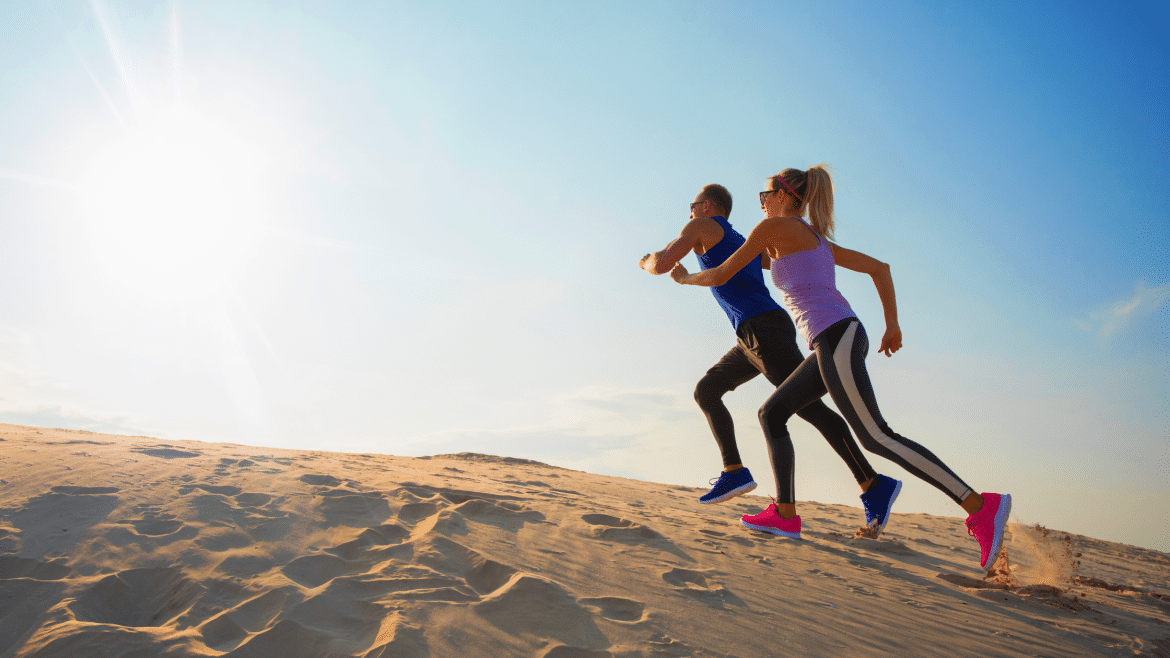 Mag
02
Mag
02
Humidity Sportswear — What to Wear When Training in Humidity?
- 2 Maggio 2025
- 0 Comment(s)
Suppose you lace up your sneakers and step outside for your run. But, damn! It may feel like you’ve walked straight into a desert or a steam room. Your shirt clings like plastic wrap, and that 5-minute warm-up feels like a full-on sweat fest. Sounds familiar? That’s the magic of humidity, where even standing still feels like cardio. But here’s the deal. You don’t have to suffer through swampy workouts. With the right gear, training in humidity becomes way more bearable. Proper humidity sportswear becomes essential for successfully exercising in various fitness environments. This trivia will provide practical guidelines and expert insights to understand the matter.
6 Tips to Choose the Right Sportswear for Humid Weather
Keep it Loose, Keep it Comfortable
Nobody needs clothes that stick like glue during a workout. When the humidity hits, breathable and loose-fitting clothes are your best friends. Tighter gear traps heat and sweat, which can slow you down before you even find your rhythm. Think lightweight tanks, roomy tees, and relaxed shorts that let your skin breathe.
Athletes and trainers agree, looser fits allow air to circulate, which naturally cools the body. The goal isn’t just to move better but to feel good doing it. Because if you’re spending half your workout adjusting your top or peeling fabric off your skin, that’s energy wasted.
Moisture-Wicking Fabrics Worth the Hype
Let’s be bold. Cotton might be great for lounging, but it’s a disaster in humid weather. It holds sweat like a sponge and turns your gear into a wet towel by the end of your session.
Performance fabrics, consisting of polyester and nylon, have engineered properties that repel moisture away from the skin. Performance fabrics directly pull sweat from your body before they make it can evaporate rapidly to provide temperature regulation.
Marketing gimmicks do not apply here. The moisture-wicking function stands as a genuine breakthrough that makes a difference during humid workouts.
Don’t Forget About Quick-Dry Clothes
If you’re sweating buckets and your clothes are still soaked long after your cooldown, you’re wearing the wrong stuff. Quick-dry apparel doesn’t just keep you lighter during training, it helps fight off odour and cuts down the swampy discomfort that can ruin a good session.
Every runner, lifter, and HIIT junkie who’s battled a humid morning will back this up. Quick-dry tech isn’t about looking cool, it’s about staying dry, light, and focused when it counts. Those who invest in hot-weather gym clothes that dry in minutes don’t just survive their workouts; they enjoy them.
Prefer Airy Vents
When clothes are designed with airflow in mind, everything changes. Mesh panels, laser-cut holes, and open-back designs allow heat and sweat to escape exactly where your body needs it most.
Brands today use athlete-tested data to identify high-sweat zones, such as the underarms, lower back, and the back of the knees. That’s where you want vents. Your clothing should work with your body, not against it. Smart ventilation can mean the difference between powering through and tapping out early.
Light-Colored Sportswear is a Bliss
Black clothing serves as a practical weight-loss accessory, yet it absorbs sunlight efficiently, which can create problems when you need to exercise in direct sunlight. Your body temperature regulation benefits from shading your skin with white, grey and pastel colours which reflect sunlight.
Even better, they hide sweat patches more easily than darker fabrics. This isn’t just about comfort, it’s about staying focused without feeling self-conscious. Those trained in the sun swear by light-colored, humidity-resistant sportswear for a reason. Less heat means more energy left in the tank.
Additional Tips
Working out in humidity means your body has to work twice as hard to cool down. That’s where smart accessories and small changes can make a big difference.
- UPF-rated Clothes: Sunburn in humid weather is no joke. Clothing with built-in UPF protection blocks harmful UV rays while keeping you cool. Athletes training outside for extended periods rely on UPF gear to protect themselves from overheating and skin damage.
- Keep Your Hat On: A lightweight cap with mesh panels protects your face from the sun while preventing sweat from dripping into your eyes. Make sure it’s not made from heavy cotton, or you’ll trap more heat than you block.
- Cool Your Neck: A chilled towel or a cooling neck gaiter placed at the back of your neck brings your body temperature down faster than you’d expect. This hack is beneficial during high-intensity intervals or long-distance runs.
- Carry a Hydration Pack: Heat exhaustion poses a danger to individuals who sweat heavily without replacing fluids. Athletes need to maintain hydration by using either hydration packs or water bottles, but they should utilise these items often. Athletes performing long-duration exercises add electrolyte solutions to their fluid consumption to restore the salt levels the body loses.
The Bottom Line
We can’t control the weather, but we can control what we wear in it. Training in humid conditions doesn’t have to mean dealing with soggy clothes and constant discomfort. Choosing the right humidity sportswear, breathable, moisture-wicking, and quick-drying is the real game-changer. Lighter colours, smart ventilation, and a few well-chosen extras can make your workout feel a whole lot easier.
And when it comes to high-performance gear, it pays to go with brands that truly understand what athletes need. Take TD Sportswear, for example. We create custom sportswear built specifically for intense training in hot, sticky conditions. Our pieces move with you, keep you cool, and are made to perform right alongside your most challenging workouts. You can easily pair them with your go-to hot-weather gym clothes and accessories without missing a beat.
 4.9/5
4.9/5

 4.8/5
4.8/5

